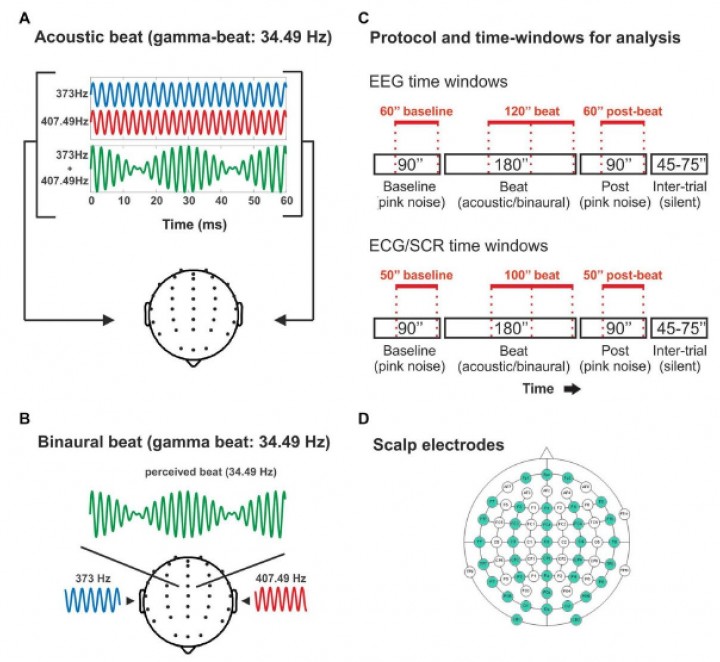The paper entitled Binaural Beat: A failure to enhance EEG power and emotional arousal, co-authored by López-Caballero and Escera has been published online in Frontiers in Human Neuroscience.
Binaural beat stimulation has been proposed as a candidate method to enhance cognitive functions by entrainment of brain oscillation at the frequency of the beat. Research in this domain has been inconclusive, in part due to methodological pitfall. Here we applied baseline-treatment-washout design with binaural and acoustic beat stimulation, in separate experimental conditions, at different beat frequencies falling within the different typical EEG band (alpha, beta, theta, delta, gamma). Results fail to show any effect of the binaural beats on EEG entrainment, nor in emotional arousal as measured through psychophysiological recordings (heart rate, skin conductance response).
The full abstract reads as follows:
When two pure tones of slightly different frequencies are delivered simultaneously to the two ears, is generated a beat whose frequency corresponds to the frequency difference between them. That beat is known as acoustic beat. If these two tones are presented one to each ear, they still produce the sensation of the same beat, although no physical combination of the tones occurs outside the auditory system. This phenomenon is called binaural beat. In the present study, we explored the potential contribution of binaural beats to the enhancement of specific electroencephalographic (EEG) bands, as previous studies suggest the potential usefulness of binaural beats as a brainwave entrainment tool. Additionally, we analyzed the effects of binaural-beat stimulation on two psychophysiological measures related to emotional arousal: heart rate and skin conductance. Beats of five different frequencies (4.53 Hz -theta-, 8.97 Hz -alpha-, 17.93 Hz -beta-, 34.49 Hz -gamma- or 57.3 Hz -upper-gamma) were presented binaurally and acoustically for epochs of 3 min (Beat epochs), preceded and followed by pink noise epochs of 90 s (Baseline and Post epochs, respectively). In each of these epochs, we analyzed the EEG spectral power, as well as calculated the heart rate and skin conductance response (SCR). For all the beat frequencies used for stimulation, no significant changes between Baseline and Beat epochs were observed within the corresponding EEG bands, neither with binaural or with acoustic beats. Additional analysis of spectral EEG topographies yielded negative results for the effect of binaural beats in the scalp distribution of EEG spectral power. In the psychophysiological measures, no changes in heart rate and skin conductance were observed for any of the beat frequencies presented. Our results do not support binaural-beat stimulation as a potential tool for the enhancement of EEG oscillatory activity, nor to induce changes in emotional arousal.
Full reference:
López-Caballero, F. & Escera, C. (2017). Enhancement of gamma-band electroencephalographic activity (solely) by binaural beats Binaural beat: a failure to enhance EEG power and emotional arousal. Frontiers in Human Neuroscience, 11, 557. https://doi.org/10.3389/fnhum.2017.00557.


